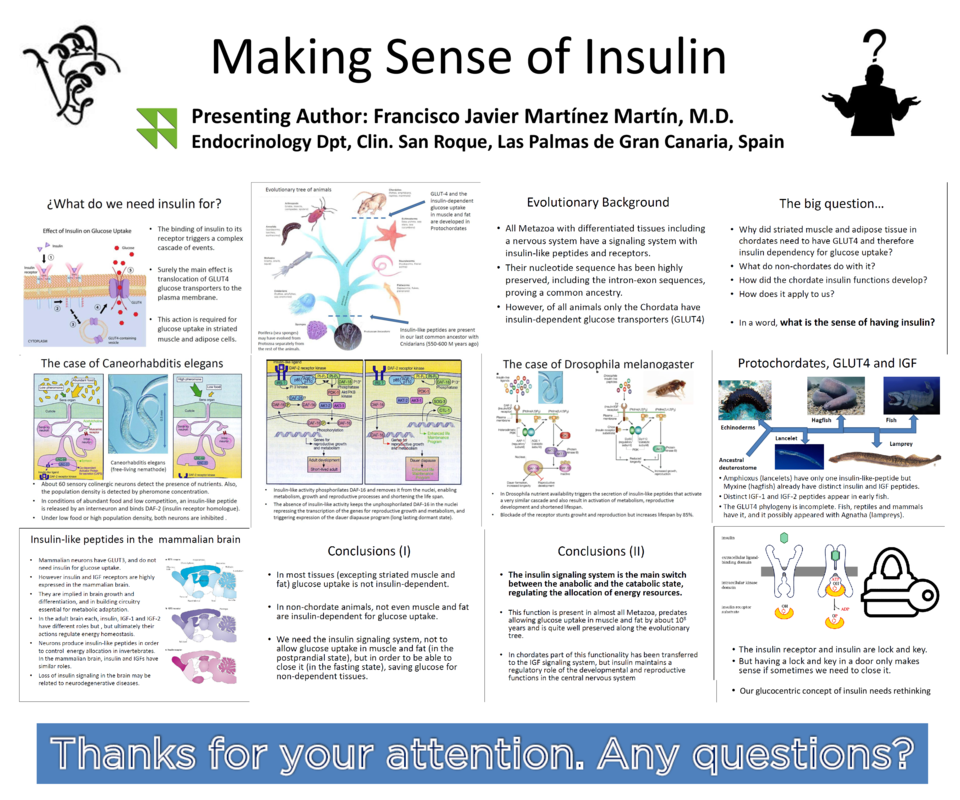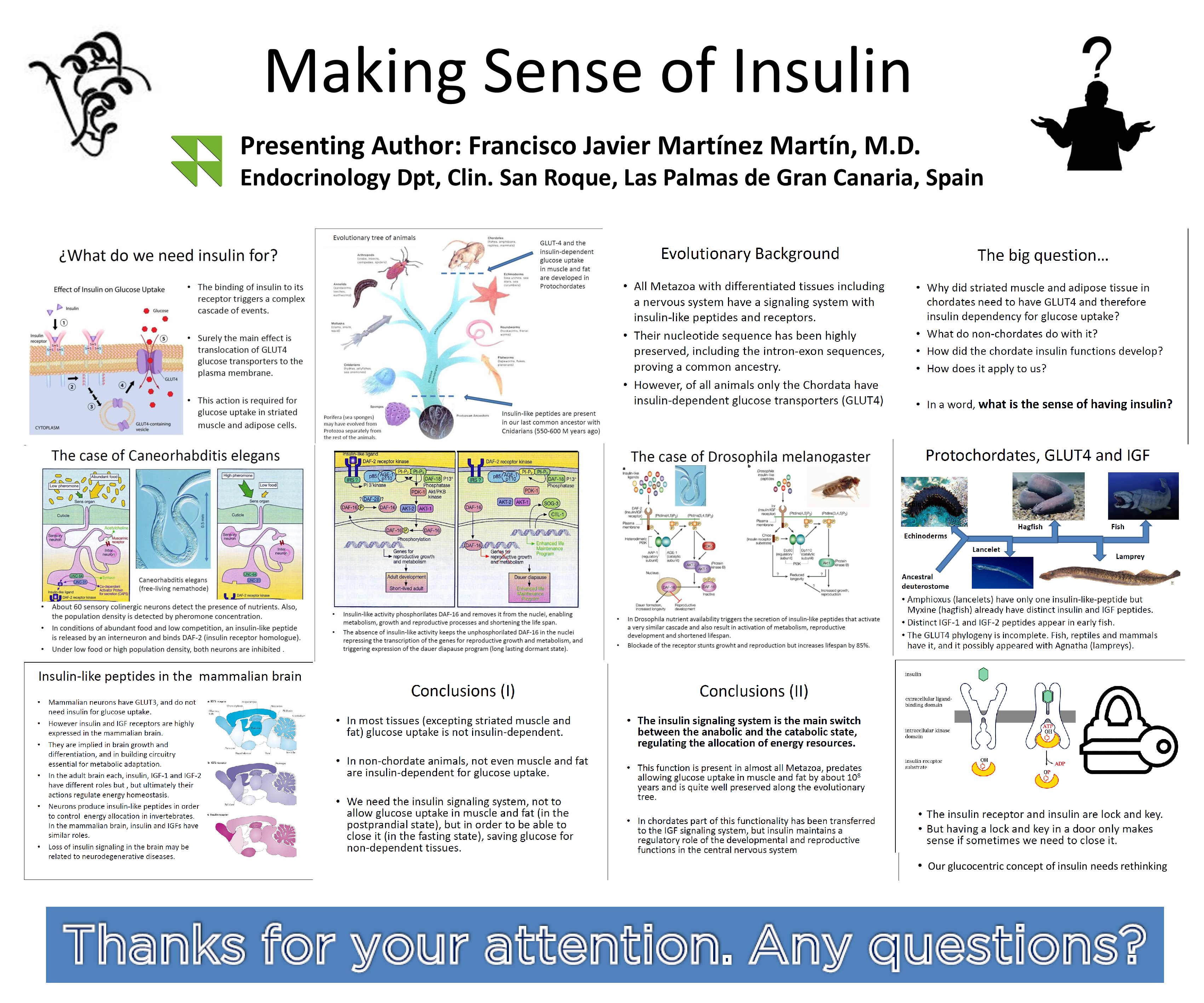Abstract
BACKGROUND: Insulin-related peptides are found in Cnidaria (the most ancient metazoa with differentiated tissues including a nervous system, dating from about 600 million years ago) and their nucleotide sequence has been highly preserved ever since. In mammals the binding of insulin to its receptor causes a cascade of actions,the most familiar one being translocation of GLUT4 glucose transporters to the plasma membrane allowing influx of glucose into the adipose and striated muscle cells. But the fact that glucose can freely enter most other tissues (via non insulin-dependent glucose transporters) and that in non-chordates the glucose influx is unrelated to insulin raises the question: Why did fat and muscle need to have GLUT4 and therefore insulin dependency? Better yet, what is the sense of having insulin?
METHODS: Review of the literature with emphasis in the insulin phylogeny.
FINDINGS: The familiar glucocentric functions of insulin appear with protochordates; however insulin-related peptides play an essential role in invertebrates activating growth, differentiation, metamorphosis, sexual activity and in general regulating the allocation of energy resources. In the well-studied nematode Caenorhabditis elegans the presence of nutrients releases an insulin-like peptide that activates metabolic and reproductive developments and shortens the lifespan, while the lack of this peptide triggers a long-lasting dormant state (dauer).
CONCLUSIONS: The insulin receptor and insulin are lock and key. But having a lock and key in a door only makes sense if sometimes we need to close it. We need insulin, not to allow glucose influx in muscle and fat (in the postprandial state), but in order to be able to close it (in the fasting state) saving glucose for non-dependent tissues. Therefore insulin is the main switch between the anabolic and the catabolic state. This function predates allowing glucose influx by one hundred million years and is well preserved along the evolutionary tree.





